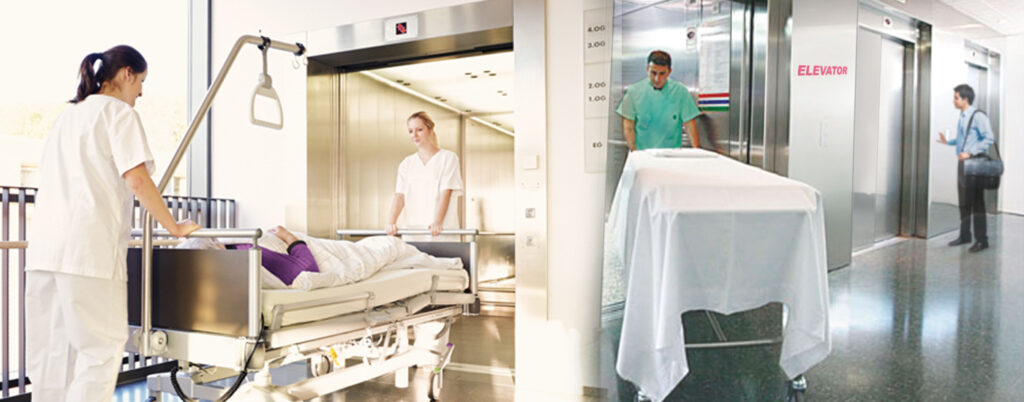Introduction
Hospital lifts are a vital component of healthcare facilities, playing a crucial role in patient transportation, staff mobility, and overall operational efficiency. To ensure the smooth functioning of these essential systems and the safety of patients and staff, it’s imperative to prioritize regular maintenance and adhere to stringent safety measures. In this article, we will explore maintenance and safety tips for hospital lifts, encompassing hospital lift design, accident prevention, features to look for, and hospital bed lifts for maintenance.
The Importance of Hospital Lift Maintenance
Hospital lifts are subjected to continuous use and must withstand heavy loads, making routine maintenance a necessity. Neglecting maintenance can lead to system failures, potentially endangering patients and staff. Moreover, regular maintenance can prolong the lifespan of the lift, reducing long-term operational costs.
Hospital Lift Design and Maintenance
- Scheduled Inspections: Implement a rigorous inspection schedule for hospital lifts. This includes checking for signs of wear and tear, loose or damaged components, and ensuring all safety mechanisms are functioning correctly.
- Routine Cleaning: Keep the lift area clean and free from debris, as this can affect the lift’s operation and safety.
- Lubrication: Proper lubrication of moving parts is essential for smooth operation and reduced friction. This not only extends the life of the lift but also minimizes noise levels.
- Calibration: Periodically calibrate the lift to ensure it operates within specified parameters, ensuring precise floor leveling.
Hospital Lift Safety Measures
Accidents involving hospital lifts can have severe consequences. To prevent such incidents, consider the following safety measures:
- Staff Training: Train staff members in the proper operation of the lift and emergency procedures. Ensure they are familiar with the lift’s features, including safety interlocks and alarms.
- Emergency Stop Buttons: Hospital lifts should be equipped with easily accessible emergency stop buttons. Regularly test these buttons to ensure they function correctly.
- Overload Protection: Invest in lifts equipped with overload protection systems to prevent accidents due to excessive weight.
- Proper Signage: Clearly label the lift with safety instructions and weight limits. This ensures that users are aware of the lift’s capabilities and limitations.
Hospital Bed Lifts for Maintenance
Hospital bed lifts are specialized lifts designed to assist with bed maintenance, allowing for easier access to critical components. When using hospital bed lifts:
- Choose the Right Lift: Ensure the bed lift is suitable for the type of hospital bed being maintained.
- Follow Manufacturer Guidelines: Adhere to the manufacturer’s recommendations for bed lift usage and maintenance.
- Staff Training: Train staff on the proper use of bed lifts to prevent accidents during maintenance tasks.
Hospital Lift Features to Enhance Safety
When investing in hospital lifts, consider the following features that enhance safety:
- Automatic Door Interlocks: Lifts with automatic door interlocks prevent doors from opening while the lift is in motion, reducing the risk of accidents.
- Emergency Battery Backup: In case of power failures, lifts with emergency battery backup ensure uninterrupted service, preventing accidents due to sudden stops.
- Remote Monitoring: Some modern lifts offer remote monitoring capabilities, allowing for real-time tracking of lift performance and immediate response to issues.
- User-Friendly Controls: Intuitive controls and user interfaces reduce the chances of user error and enhance overall safety.
Conclusion
Prioritizing maintenance and safety measures for hospital lifts is not only a legal and ethical requirement but also crucial for the well-being of patients and staff. By adhering to a strict maintenance schedule, implementing safety protocols, and investing in lifts with advanced features, healthcare facilities can ensure the reliability and safety of their hospital lift systems. This not only prevents accidents but also contributes to the efficient operation of the facility and the overall quality of patient care.
Remember to consult with lift manufacturers and industry experts to tailor your maintenance and safety practices to the specific hospital lift systems in use at your facility. Your commitment to safety will help create a secure and efficient healthcare environment for all.
Regenerate

